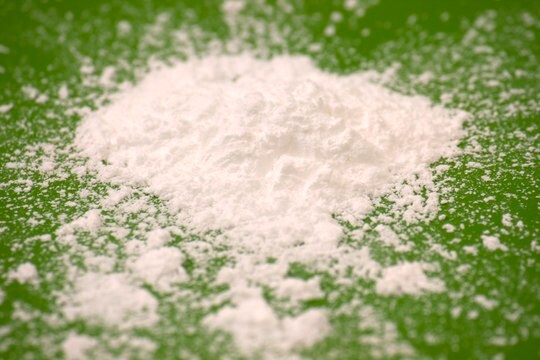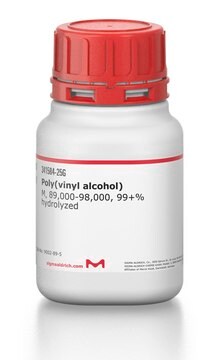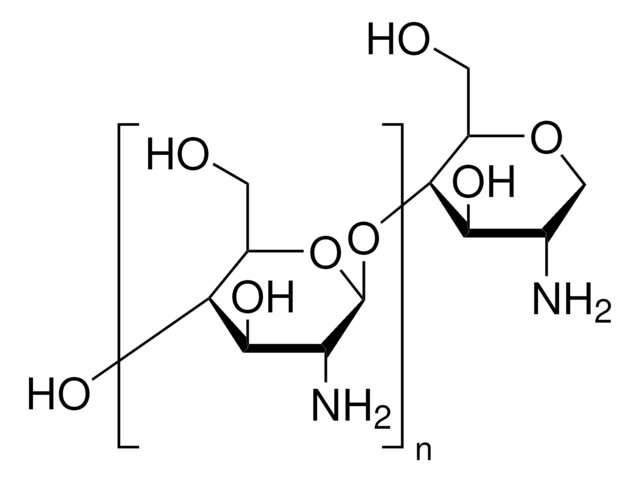902403
3D Printing Hydroxyapatite ink
Sinónimos:
3D printing Hydroxylapatite ink, Calcium phosphate hydroxide, Durapatite, Hydroxyapatite, Hydroxylapatite, Hyperelastic bone
About This Item
Productos recomendados
Formulario
liquid
características de los productos alternativos más sostenibles
Design for Energy Efficiency
Learn more about the Principles of Green Chemistry.
sustainability
Greener Alternative Product
viscosidad
20-60 Pa.s
categoría alternativa más sostenible
temp. de almacenamiento
2-8°C
Descripción general
Aplicación
Our Hyper elastic Bone 3D-printing ink is comprised of micron sized hydroxyapatite suspended in a mixture of organic solvents containing a dissolved, high molecular weight elastomeric, biocompatible polyester (polylactic-co-glycolic acid;PLGA). Prior to further use, to remove residual solvents after 3D-printing (or other application such as coating, direct painting etc) the composite material should be washed in 70% ethanol and then by water. The 3D-printed hydroxyapatite can be used as a flexible, bioactive, biocompatible ceramic composite or it can also be sintered (1500 °C recommended) in a non-oxidative atmosphere to yield Hyper elastic Bone parts. As sintered, Hyper elastic Bone is highly chemically and thermally stable, and can be used for a wide variety of high temperature applications. It also has numerous hard biological tissue (teeth and bone) applications, and can serve in it as as-printed, washed form as flexible ceramic composite cell scaffold, or in its sintered form, as a rigid ceramic scaffold/implant. In its 3D-printed, flexible form, Hyper elastic Bone has been shown to be highly osteoconductive, and osteogenic, capable of differentiation adult human stem cells into osteoblast-like cells.
Precaución
Palabra de señalización
Danger
Frases de peligro
Consejos de prudencia
Clasificaciones de peligro
Aquatic Chronic 3 - Carc. 2 - Eye Irrit. 2 - Repr. 1B - Skin Irrit. 2 - STOT SE 3
Órganos de actuación
Central nervous system
Código de clase de almacenamiento
6.1C - Combustible acute toxic Cat.3 / toxic compounds or compounds which causing chronic effects
Clase de riesgo para el agua (WGK)
WGK 3
Punto de inflamabilidad (°F)
152.6 °F
Punto de inflamabilidad (°C)
67 °C
Listados normativos
Los listados normativos se proporcionan para los productos químicos principalmente. Para los productos no químicos sólo se puede proporcionar información limitada. Si no hay ninguna entrada, significa que ninguno de los componentes está en la lista. Es obligación del usuario garantizar el uso seguro y legal del producto.
EU REACH SVHC Candidate List
EU REACH Annex XIV (Authorisation List)
Elija entre una de las versiones más recientes:
Certificados de análisis (COA)
¿No ve la versión correcta?
Si necesita una versión concreta, puede buscar un certificado específico por el número de lote.
¿Ya tiene este producto?
Encuentre la documentación para los productos que ha comprado recientemente en la Biblioteca de documentos.
Los clientes también vieron
Nuestro equipo de científicos tiene experiencia en todas las áreas de investigación: Ciencias de la vida, Ciencia de los materiales, Síntesis química, Cromatografía, Analítica y muchas otras.
Póngase en contacto con el Servicio técnico







